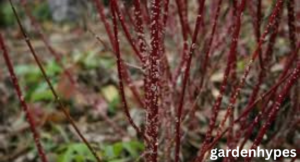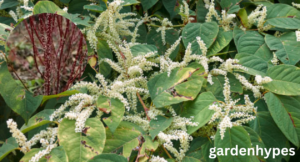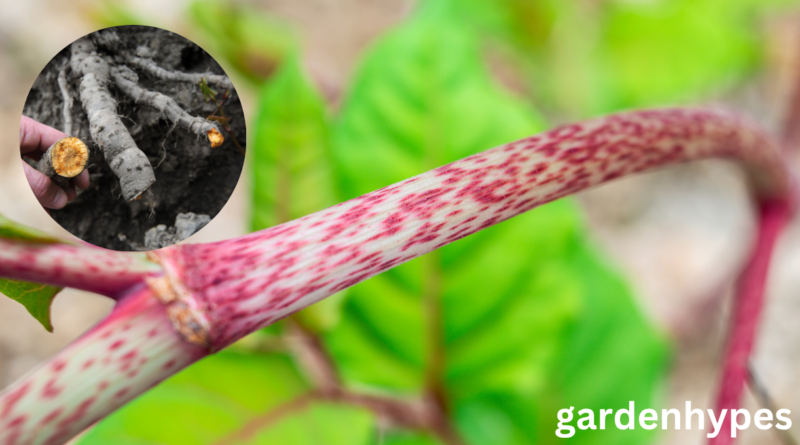Japanese Knotweed Berries What You Really Need to Know
Introduction to Japanese Knotweed
If you’ve ever come across thick, bamboo-like stems sprouting rapidly along riverbanks or creeping into your backyard, chances are you’ve encountered Japanese Knotweed Berries. This plant isn’t just an eyesore—it’s considered one of the most invasive species in the world. But lately, there’s been a surge of curiosity surrounding a lesser-known topic: Japanese knotweed berries. Are they real? Are they dangerous? Let’s peel back the layers and get to the root of this fascinating question.
click in link Wild ginseng look alikes
Japanese knotweed (Reynoutria japonica), originally from East Asia, was introduced to the West in the 1800s as an ornamental plant. Since then, it’s become infamous for its aggressive spread and stubborn resilience. Its deep-reaching roots can break through concrete, damage property foundations, and overtake entire gardens if left unchecked. But amid all this notoriety, the discussion around its so-called “berries” remains a bit of a mystery.
Before diving into the truth about Japanese knotweed berries, let’s understand the plant itself. It grows incredibly fast—up to 10 cm a day in peak season—and is capable of regenerating from even the smallest piece of root or stem. With heart-shaped leaves, bamboo-like stalks, and small creamy-white flowers that bloom in late summer, it’s easy to recognize once you know what to look for.
Despite the flood of information on how to remove or control this plant, many people wonder if it produces berries like other invasive plants. The idea sounds plausible, especially since many invasive species spread by dropping seeds through fruit. But with Japanese knotweed, things aren’t so straightforward.
The Life Cycle of Japanese Knotweed
To understand whether or not Japanese knotweed produces berries, it helps to look at its annual cycle. This plant follows a distinct pattern: in spring, reddish-purple shoots emerge rapidly from the ground. These shoots eventually become tall, hollow stems resembling bamboo. By mid-summer, the plant reaches full height, often growing up to three meters tall.
In late summer to early autumn, Japanese knotweed produces clusters of small, creamy-white flowers. These flowers are highly attractive to pollinators like bees, yet they don’t usually result in berries or fruit. By late autumn, the leaves fall off and the stems die back, leaving behind dry, brown stalks that persist through winter.
So where do berries fit into this life cycle? The short answer: they don’t—at least, not in the way you might expect. In its native environment in Japan, the plant sometimes produces fertile seeds and even fruit under very specific conditions. But outside of its home territory, particularly in the UK and North America, these reproductive parts are rarely functional.
Most Japanese knotweed plants in the West are clones of a single female specimen introduced in the 19th century. Without male plants, natural pollination becomes nearly impossible. This means that the plant almost never produces viable seeds or berries in these regions. Instead, it spreads primarily through its underground rhizomes and stem fragments, making it even more tenacious.
Do Japanese Knotweed Berries Really Exist?
This is where things get interesting—and confusing. Many gardeners and foragers have claimed to spot what they think are Japanese knotweed berries. But more often than not, what they’re seeing are either the flowers before they bloom or leftover seed clusters that never fully develop into fruit.
In truth, Japanese knotweed does not produce true berries in most climates where it has become invasive. The confusion often stems from misinformation or misidentification. Some people may mistake knotweed’s dried-out flower clusters or seed capsules for fruit, especially in late autumn when everything starts turning brown and shriveled.
And even if you did manage to find a knotweed plant that produced what looked like berries, chances are they wouldn’t be fertile or capable of spreading the plant effectively. Unlike other berry-producing invasive plants like Himalayan blackberry or bittersweet nightshade, Japanese knotweed doesn’t rely on fruit for propagation. That’s part of what makes it so difficult to control—it doesn’t need to produce seeds to dominate an area.
In summary, Japanese knotweed berries are more myth than reality, at least in regions like North America and Europe. Most of what people believe are berries are actually dried flowers or failed seed pods that won’t sprout even if you tried.
What Japanese Knotweed Produces Instead
If not berries, then what does Japanese knotweed produce? The key lies in its unique reproductive strategy. Rather than relying on fruit and seeds, this plant spreads through an underground network of rhizomes—thick, root-like structures that store energy and nutrients.
click in link Wild ginseng look alikes

These rhizomes can grow several meters in all directions and are incredibly difficult to remove. Even a piece as small as a fingernail can regenerate into a full-grown plant. That’s why cutting or mowing it down without proper disposal is actually dangerous—it can make the problem worse by spreading the fragments.
Japanese knotweed flowers do contain both male and female reproductive parts, but they rarely function effectively outside of the plant’s native habitat. Most of the flowers that bloom in late summer are sterile. So even when they produce seeds, they’re usually non-viable, and the plant can’t reproduce sexually in most regions.
This unique reproductive method—vegetative cloning—makes Japanese knotweed particularly hard to eliminate. It doesn’t need birds to eat its fruit or animals to spread its seeds. Instead, it can quietly grow underground all year round and spring back to life the moment conditions improve.
So, while other plants rely on their berries to spread and multiply, Japanese knotweed takes a more stealthy, below-the-surface approach. It may not offer the color or taste of berries, but its impact is far more widespread.
Are Japanese Knotweed Berries Edible or Poisonous?
Let’s clear up another popular question: if Japanese knotweed did have berries, would they be safe to eat? While there are plenty of myths floating around online, the truth is fairly straightforward.
Since the plant rarely produces real berries, the question is largely hypothetical. But what’s not hypothetical is the part of the plant people do eat—its young shoots. That’s right—Japanese knotweed shoots are actually edible and are often compared to rhubarb. They have a tart, citrusy flavor and are packed with antioxidants, vitamin C, and resveratrol—a compound also found in red wine that’s believed to have health benefits.
However, just because the shoots are edible doesn’t mean the rest of the plant is safe. The leaves and mature stems are tough and bitter, and the roots can accumulate pollutants if the plant is growing in contaminated soil. There’s also the issue of correctly identifying the plant. Mistaking Japanese knotweed for something else could lead to serious consequences, especially if you accidentally consume a toxic lookalike.
As for the imaginary berries—if they did exist, there’s no concrete evidence to prove whether they would be toxic or edible. So it’s best to avoid experimenting with anything that looks like fruit on this plant. Stick to the young shoots in early spring if you’re foraging, and always consult an expert before consuming any wild plant.
click in link Wild ginseng look alikes

FAQs
- Do Japanese knotweed plants produce berries?
No, Japanese knotweed rarely produces true berries. Most plants in the UK, US, and other regions are female clones and lack male counterparts for pollination. What some people mistake for berries are typically dried seed pods or flower remnants. - Can you eat Japanese knotweed berries if you find them?
In most cases, there are no real berries to eat. But if any fruit-like structures do form, there’s no reliable data on their edibility. It’s safer to avoid them altogether. The edible part of the plant is the young spring shoots, not any supposed fruit. - Is it dangerous if Japanese knotweed starts producing berries?
Not necessarily. Even in rare cases where seeds or fruit form, they’re usually non-viable. Japanese knotweed spreads mostly through its roots and stem fragments, not by seeds or berries. Still, any signs of reproduction should be managed carefully. - Why do some people believe Japanese knotweed has berries?
This belief likely comes from confusion with other invasive plants or misidentifying the plant’s dried flower clusters or seed heads as berries. It’s a common misconception that continues to circulate online. - How can I tell if I’ve found a Japanese knotweed berry?
Chances are, you haven’t. Instead of berries, look for small, pale flowers in late summer and dry, papery seed pods in the fall. If you believe you’ve found berries, it might be a different plant entirely or a rare anomaly
